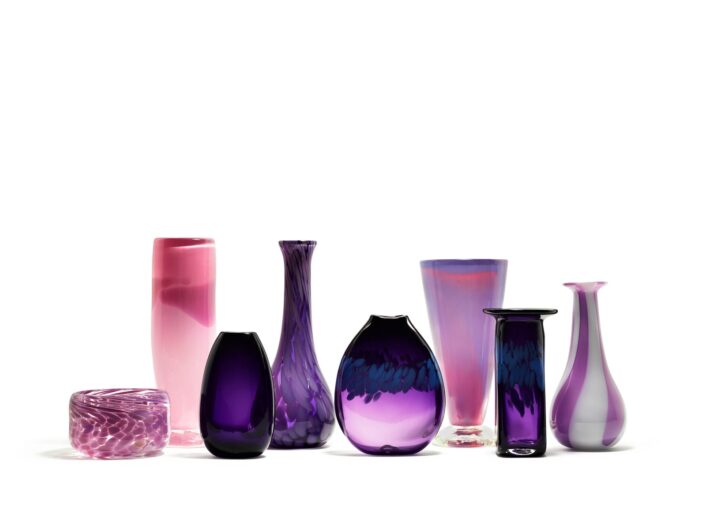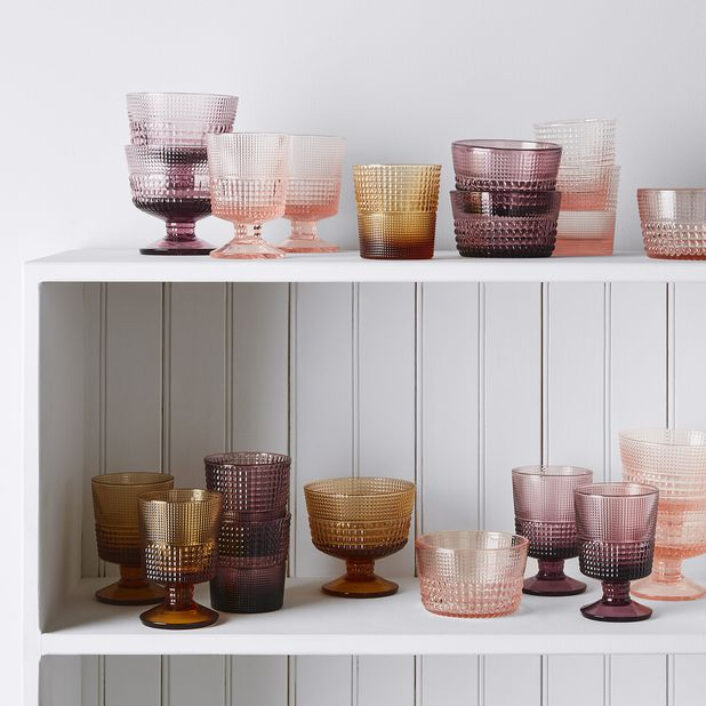Design
NasonMoretti’s colored glassware
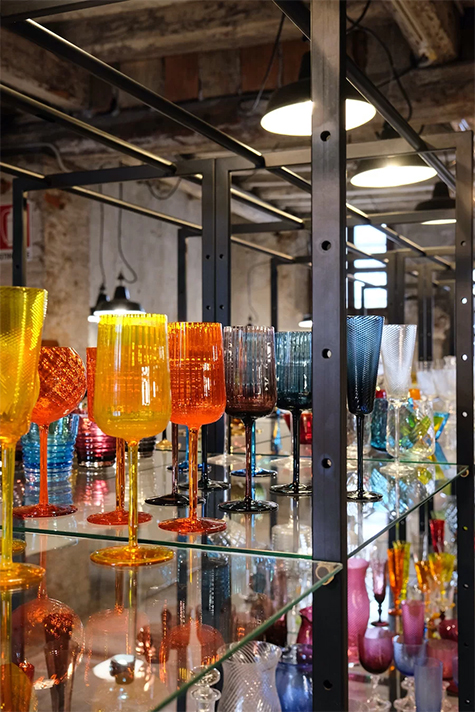
In addition to NasonMoretti’s founding in 1923, the year is also when the design of the first lamp was put into production.
Image courtesy of: Veneto Secrets
NasonMoretti was born almost one hundred years ago, one year shy of one hundred years actually. The 1920’s were a time of great success for the Italian visual arts and artists; however NasonMoretti was exceptional compared to his contemporaries.
The glassware produced soon became synonymous with Venetian “art for the table.” Over the past one hundred years, NasonMoretti has adorned the tables of both the most prestigious lineages and those looking for a refined table in their everyday lives.
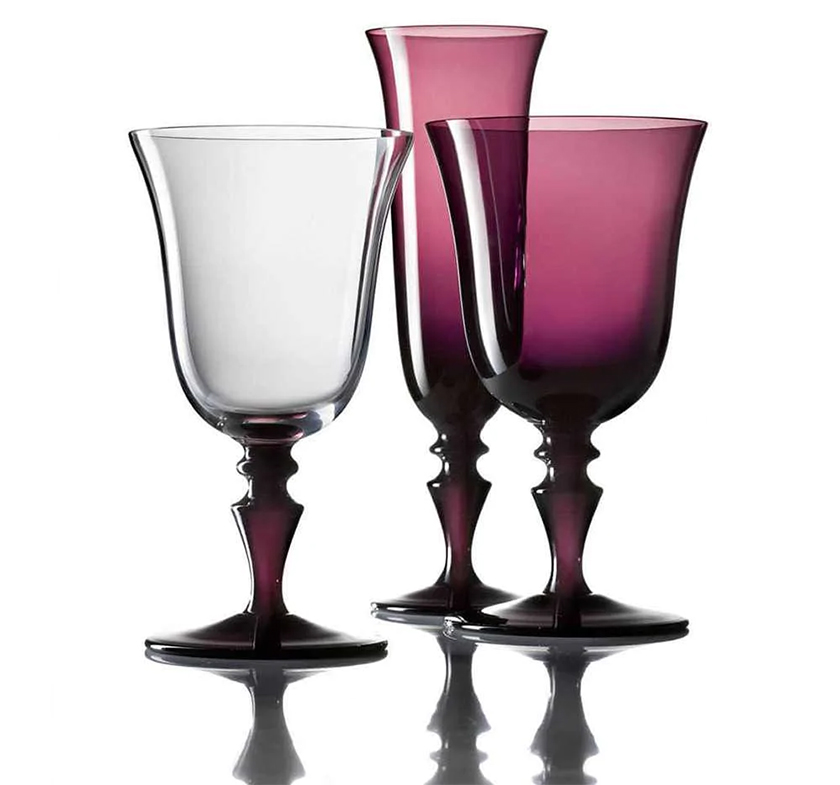
Three pieces from the 8/77 Colorato Collection.
Image courtesy of: Shop Decor
Five brothers, Ugo, Antonio, Giuseppe, Vincenzo, and Umberto, founded the now long-established glassware company. Since its foundation, NasonMoretti has been at the forefront of design. Following World War II, the brothers decided to move away from classic forms and towards stylistic figures.
When the company won the prestigious impasse D’Oro Award in 1955, NasonMoretti’s notoriety spread both domestically and internationally. While presenting the award, it was said (courtesy of the company’s web site), “The products recently manufactured by NasonMoretti are characterised by the abandonment of standard Murano production methods and by the innovate treatment of glass which creates a new aesthetic effect.”
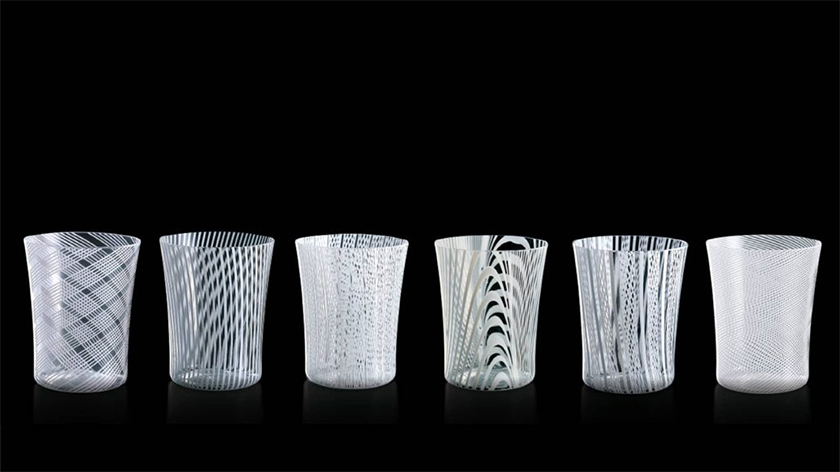
Canova Water Glasses, set of six.
Image courtesy of: Malbi Decor
NasonMoretti’s ability to pick up upon influences from throughout the world has further been elevated through collaborations with some of the world’s most illustrious brands. Among those that the company has teamed up with, Bottega Veneta, Hermes, and Valentino stand out from the fashion sector. Additionally, NasonMoretti has also collaborated with Tiffany & Co., for example from the jewelry side and the glamorous Harry’s Bar in London from the entertainment sector.
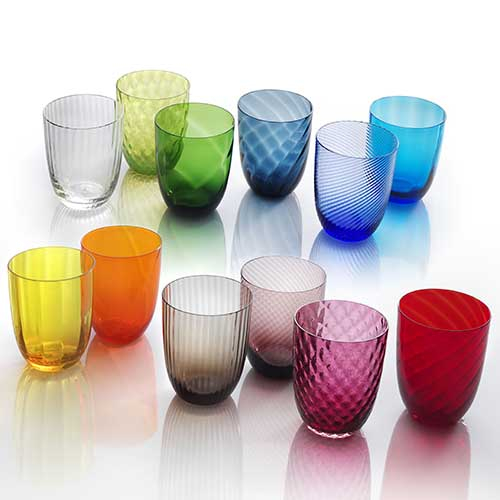
Idra Collection. This “basic” glass is handmade making it unique in texture and color. It comes available in nineteen different colors and six different weaves. The weaves are hot engraved on the glass culminating in an end-result that is a glass which represents Murano traditions.
Image courtesy of: NasonMoretti
Unique to all Murano glassware is the basic ingredient of silica- a sand that liquifies at high temperatures and soda- an ingredient that allows the material to melt at lower temperatures. Once other substances are introduced, the clear glass paste takes on hues and variations.
Throughout the history of glassmaking, preparing colors has been a sacred tradition and practice. Each master glassblower has his or her own recipe book that is kept completely private. The team at NasonMoretti has been successful at perfecting the quality of glass and inventing unique color combinations. As an example, the company has twenty-two different types of green and eight types of blue. Perhaps most impressive is that they have “numerous variants with a matte finish.”
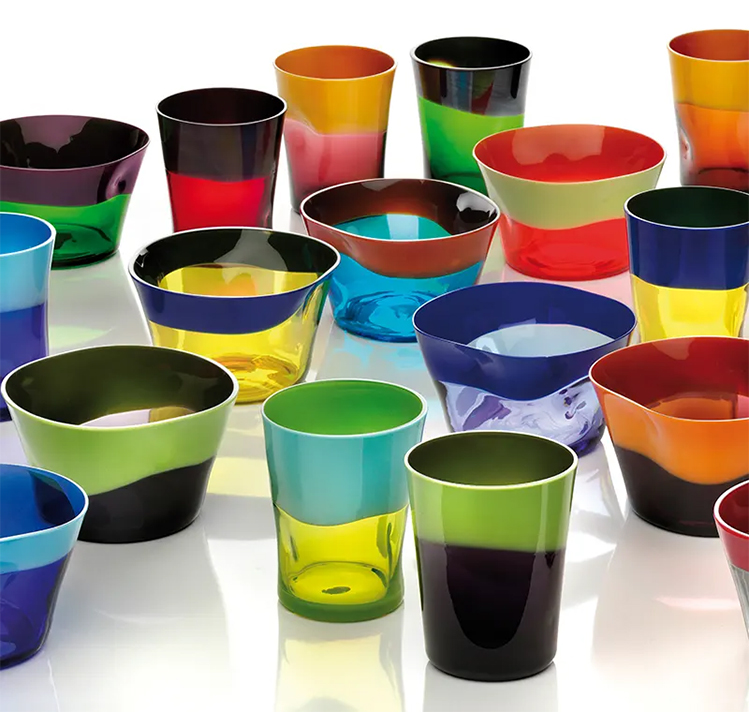
Pieces from the 8/77 Colorato Collection. Our favorite collection, this is a perfect combination between classic forms and vibrant colors. This technique was developed in 1951; (courtesy of Issimo) it “involves a crushing the glass which adapts to the hand and acquires a distinctive ergonomics.”
Image courtesy of: Issimo
NasonMoretti continues to push the boundaries of glassblowing. The company is now run by Marco, Piero, and Giorgio Nason… all cousins who are the keepers of the industry’s most coveted color recipes. At the factory, each master is able to create roughly thirty models an hour. The blown shapes are cooled slowly in a specific oven over the course of four and a half hours. Then, the models are moved to the “cold cutting department,” where each object is cut with diamond dust, sanded, polished, washed, and pressed before being submitted to quality control.
As per the company’s web site, “During these first 100 years, our blows and breaths have been numerous, but they have encouraged only one passion: since forever our passions, together with that of our fathers, has warmed up by the fire of the crucibles and has expressed itself in the elegance and fragility of Venetian glass by virtue of a calling to research and formal experimentation that moves with the times.”
